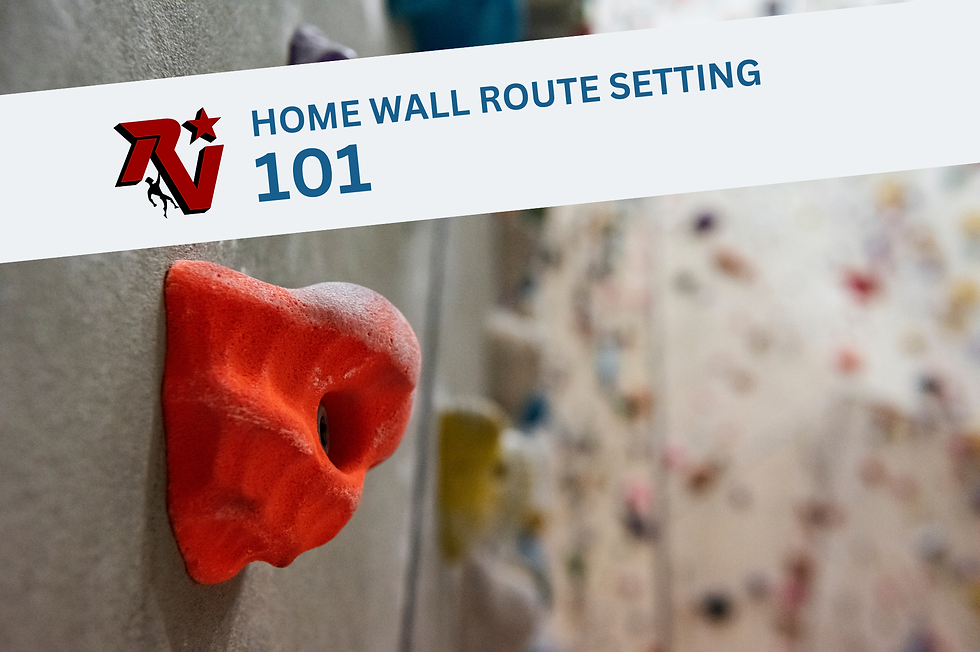Your Hangboard Routine Isn't Working? This Might Be Why
- Dovi Hirsch
- Jan 19, 2023
- 3 min read
by Christopher Schafenacker

So, you’ve started hangboarding? Let me guess: you’ve finally hit that plateau where, despite a truckload of psych, you’re no longer progressing through the grades and you’re convinced it’s because your fingers can’t handle (see what I didn’t there?) the shrinking hold sizes. You’re probably wrong. Here’s what you need to know.
1. You Don’t Need to Hangboard (Yet)
If you’re hitting the first plateau of your climbing career, first of all: congrats! This means you’re doing everything right. You’re trying hard, you’re tracking your success, and you’re looking for ways to improve. That’s half the battle. The other half is crafting solutions that address gaps in your ability. Hangboarding may be one such solution but chances are this isn’t (yet) the case and may, in fact, be counterproductive.
It’s easy to fall into the trap of believing if only you were stronger you would be sending harder. Strength, after all, is fun to train and easy to measure. It’s also an important part of climbing and yet only if you know how to use it.
Before you train yourself into another bulging gym rat with talons for hands, focus on building the technique and movement needed to make the most of the strength you already have. Translation: don’t hangboard (yet). Instead, figure out how to finesse your way through this first plateau and save the sets and reps for when you’re sure no amount of improved footwork will help you step up to that next grade.
2. You’re Sure You Need to Hangboard? Ok, But Don’t Waste Your Time
Hangboarding is as apt to cause injury as bring improvement and the reason is that a lot of people do it wrong. Don’t tack a few sloppy hangs onto the end of your session. Don’t sacrifice time on the wall for time on your hangboard. And don’t get so wrapped up in hangboarding that you forget you’re doing it to improve at climbing, not hangboarding, itself.
Effective hangboarding is goal-oriented, cyclical, and periodic. Pick a hangboard protocol that supports a specific goal and stick with it. Invest quality effort in every session and then stop when you have completed a full training cycle (generally, 4-6 weeks). Apply your gains to actual climbing so that potential strength evolves into practical strength and then wash, rinse, and repeat.
3. Don’t Forget the Purpose of Training
Hangboarding (or training of any kind) won’t make you better at climbing. Rather, it will simply provide you the raw materials required of improvement. What you do with these is up to you but if you want to crush harder you need to take the additional step of showing up and trying hard. In other words, it might not be your hangboard routine that isn’t working, but you. If other aspects of climbing (headgame, partner dynamics, access to challenging routes, etc.) are interfering with giving it your all, you need to make at least as big of a priority of addressing these as of hanging from your fingertips.
Featured Climbing Training Gear
Maverick: The on-the-go, bring it anywhere hangboard. On a family road trip to keep your fingers in shape. We like to bring this to the crag with us to keep our fingers warm—without losing skin on mediocre warm-ups—at that steep, thuggy sport crag.
The Rocket Wall: Available in 6’ and 8’ widths, it’s been tough for us to keep up with the demand for this innovative home climbing wall solution. Slightly overhanging, the Rocket Wall is big enough to set routes on, or to build a systems board.
The Rock-Stah: Our handcrafted version of a traditional hangboard, with curving crimp rails to help alleviate unnecessary strain on your pulleys. Because ain’t no one got time for a finger injury…
The Rocketeer Wall: our free-standing adjustable solution for those who can’t mount a hangboard anywhere in their home or apartment—or who are limited on space. The Rocketeer gives climbers the additional option to set specific climbing holds. Recreate the crux holds of your proj and get ready to send, bruh.











Comments